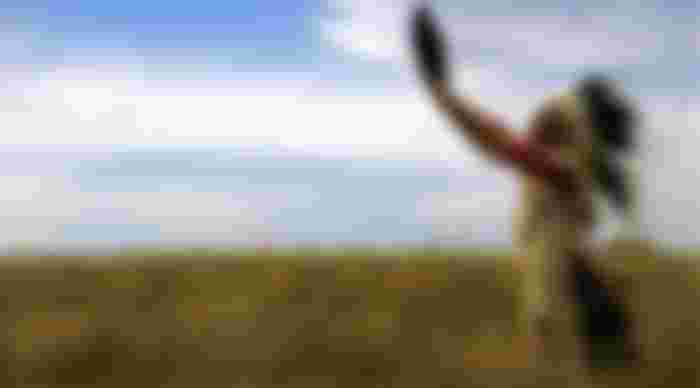
The first migrations from the Eurasian continent to the United States are thought to have taken place more than 12,000 years ago. They were possible because of the landmass called Beringia, which once connected America with Eurasia at the site of the Bering Sea today. It is believed that three great waves of migration took place across this landmass. These prehistoric people inhabited North and South America and formed hundreds of different tribes, each with its own unique language and tradition.
The origin of the term Indian is associated with Christopher Columbus, who believed that he had sailed to eastern Idjija, but in fact, reached the shores of America, so for that reason he called the people he found there Indians. The Choctaw Chiroki, Crick, Chixo, and Seminole tribes were called by the early settlers five civilized tribes. These tribes were considered more civilized because of the similarity of their culture with the European one.
They systematically built villages and cultivated fields, and some of the natives were even so rich that they owned slaves. The first contact between Native Americans and Europeans took place in the 11th century when Nordic sailors met with natives along the shores of today's Canadian region of Newfoundland.
The Vikings called the Native Americans a screener, meaning barbarian or alien.
When Columbus discovered the new world in 1492, there were 2-18 million natives living on the continent. By the twentieth century, homicides and diseases had reduced the population to about 250,000 in the United States and 100,000 in Canada.
The most famous religious ritual
The Sun Dance is probably the most important religious ceremony of the Prairie Indians in North America, which brought together all related tribes. For nomadic peoples, this ritual was an important reminder of the basic belief about the universe and supernatural forces, which was at the root of all secondary cultural differences. The dance of the sun took place once a year, in late spring at a time when bison reunite on the prairie after a long winter. Every year the host was a different tribe. Preparations for the ritual itself lasted throughout the year and involved or included many members of the tribe, especially relatives and mentors of the dancers. Although everyone attended the ceremony, only a few participated in the ritual dance. There are several versions of the ritual and its roots go back to the distant past. Usually, the ceremony would begin with the erection of a totem or pillar, around which would begin the tragic dance of the participants, which sometimes lasted for days without stopping, without water and drink. The dancers were most often connected to the pillar with narrow straps, which they fastened on themselves with metal rings that pierced the skin on their chests or backs.
The last Indian
Born (1861-1916), he was the last member of the Yahi tribe to inhabit California. Widely known in his time as the semi-wild Indian in America, Isa spent almost his entire life completely outside of modern civilization, until in 1911 he appeared at the foot of the Larsen volcano in his fifties. Isi in the language of the Indians means Man. Anthropologist Alfred Krober called the last Indian a man because, in the culture of the Jahi Indians, tradition finds that a member of a tribe must not say his own name or the name of a dead man. When asked what his name was, Isi replied, "I don't have a name, because there was no one to give me a name," which means no Jahi ever said his name. Anthropologists at the University of California studied Isi and hired him as an assistant. He spent most of the last five years of his life in a university building in San Francisco.
The Greatest Massacre
Perhaps the bloodiest massacre of the natives, near Ber-River, has remained in the shadow of history because it took place during the American Civil War. For northern Seasons, the southeastern part of the state of Idaho was home, and Mormon settlers increasingly seized Native American land. The Exosomes themselves soon found themselves at the target of Colonel Patrick Conor and 200 California volunteers, who vowed not to take prisoners. At dawn on January 29, 1863, soldiers attacked and brutally killed nearly 250 Indians. They raped all the surviving women, crushed the heads of the wounded with axes, and set fire to all the huts.
Apaci
The Apache Indians were the American version of the ninja. They were able to snuggle behind your back, cut your neck without you even knowing what had happened to you. They used primitive weapons made mostly of wood and bone. Their skill in handling a knife could not be compared to anyone in the world, and they were very good with a tomahawk and a throwing ax. They were in fear and trembling of the southwestern parts of the United States, and even the military had trouble suppressing them. They were great at hand-to-hand combat, and their descendants today train modern special units.
Mohawk
The Mohawk Indians are a tribe that lived on the territory of today's New York. In a way, they represent an example of matriarchy, given that the mothers of clans are elected by the tribal council. The men were in charge of warfare, hunting, and trade. There was news in canoeing, Indian boats, and they were also excellent archers. It is not known whether they really practiced eating human flesh, for example, defeated opponents, but the more tribal members reject such theories.
Tear Trail
The Path of the Sun is the Cherokee name for what the Americans called “Indian Migration.” During the 19th century, the United States government created “Indian Territory” in the Oklahoma region. With the aim of moving there all the native tribes from the east. Some tribes agreed to this, and the U.S. military forced those who did not. As they were peaceful, instead of fighting, they turned to the Supreme Court for help. The court ruled in their favor, but US President Andrew Jackson, despite the court's decision, sent an army to drive the Cirekis to Oklahoma. The tribe was not ready for the long journey through the harsh winter. Thousands of Ciroki Indians died during the journey that Indians remember as the Path of Tears.
Tomahawk
The warriors of most prairie tribes considered it a great honor if someone was able to touch an opponent without the opponent touching him during the fight. It was called the "Cup" and was considered a greater honor than wounding the enemy, and even stealing his horse. This is where the importance of the tomahawk is reflected. Probably immediately after the bow and arrow, the Indians are known for using this short battle-ax. The tomahawk handle was made of wood, and the head was originally made of stone, which was later replaced by metal alloys. The head and the handle of the ax were connected with a rope. It was used in hand-to-hand combat, but also as a throwing weapon. he was only a weapon. Many magical functions were attributed to him. The burial of the tomahawks meant peace, his excavation the declaration of war, and he played a significant role in numerous religious detachments.
Lacrosse
It is less well known that lacrosse, a sport similar to a mixture of football and cricket, originates from the American Indians. The first historical traces date back to the beginning of the twelfth century, and many later researchers, especially Jesuit missionaries, gave numerous descriptions of Indians playing this game. Lacrosse played a significant role in the spiritual and social life of the Indians, symbolizing their spirit and the role of warriors. Lacrosse was played in honor of the Creator, who is believed to be the Creator of the game.
Jerome
Geronimo was the chief of the Cirikava Alpaca tribe. He married several times and had at least six children. The Mexicans, with whom his tribe was at war, fraudulently attacked his camp in 1851 when his mother, first wife, and three children were killed. Eager for revenge, he gathered his compatriots and carried out a massacre of Mexicans. He was afraid and trembling for his opponents and it was said that he had supernatural powers and that even bullets could do nothing to him. He spent the last 23 years of his life as a prisoner of war.
Pocahontas and John Smith
Certainly, the most famous version of this story about the forbidden love of an Indian princess and a European settler is Disney's feature cartoon "Pocahontas". However, the truth behind this story is quite different from a fairy tale. we're just friends, and she was in love with a completely different settler, John Rolf, a tobacco farmer. America, where they had a son, Thomas, who died on her return to America at the age of 22 from tuberculosis or pneumonia.


